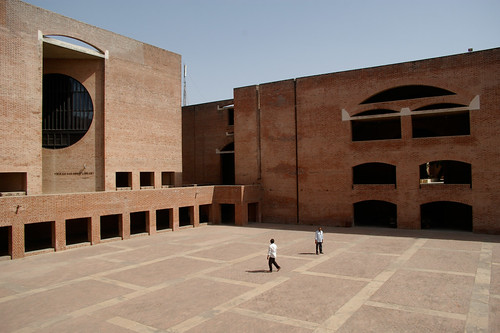April 13, 2010
by Gaurav Rastogi
This week was crazy as far as travel schedules go. Within a 5 day period, I passed through 5 Indian airports. I noticed that some of the larger airports have made significant improvements, while the others are locked away in antiquity. Here’s my rating of the Indian airports as on the first week of April 2010.
Delhi International: I arrived into this airport from Heathrow’s new Terminal 5, and boy! was the Delhi airport a sharp contrast. The airport has not changed much in the last year or so, but I believe that they are making the new terminal gates as we speak. They have started using the new runway, though, and the first thing one notices is that the runway is looooong. The plane (and all planes into Delhi this week) had to taxi for 15 minutes to get into the terminal after landing. As soon as I did customs, I was asked to stand in line to wait for my shuttle to the domestic airport (don’t ask…it’s a long story). The line for the shuttle was chaotic, and the bus, oh! the bus, was a trap set out by mosquitoes to lure in the tired-but-surprisingly-juicy international passengers. The bus meandered through the airport and got to an unlabeled domestic terminal after a strangely long trip. No announcement was made to reveal the airlines operating from the terminal we were standing at, which led to hurried gesticulation amongst harried passengers who could only use sign language to communicate amongst themselves. A performance worthy of a slapstick comedy of the sort not seen since “Mind Your Language”. Net net, this airport was a disaster.
Flying *out* from the Delhi International airport is a much improved experience. The “baggage pre-screening X-ray” lines have gone, and the passengers at the terminal moved quickly. I wonder why the Airport Authorities have to improve the departure experience from India, while keeping out tattered welcome mat at the arrival terminal!
Overall score: C-minus
Delhi Domestic: I took several flights in and out of this terminal last week. This airport has definitely made improvements over the last couple of years. The airport has all-new shops, and has a spiffy metal-and-glass look which is standard across the world. The downside was the really, (really, really) crowded departure gates at the lower deck. There were thousands of people “downstairs” at the departure gates, where they had to stand for interminable periods, and wait in line to get into a bus to be driven to the actual aircraft. A bus! Come on! What happened to the Jet Way? I am only guessing that the company selling JetWays sent a trainee sales guy to this airport. Why would they not put a jet-way at this terminal like all other self-respecting airports?!
The *free* internet at the airport was a life saver, as was the excellent book store.
Overall score: B-minus
Bangalore International: This is the brand-spanking-new airport in Bengaluru that was erected a couple of hours outside city limits. The airport is neat, efficient, and quick. I liked the quiet efficiency of this airport- the bags came on time, and the walk to the taxis was minimal. Absolutely fantastic. Now if they could just build this thing nearer to the city! As things stand now, it took me 2.5 hours to get to Bengaluru from Delhi, and another 2 hours to get from the airport to my hotel. This was with zero traffic.
Overall score: B-plus
Pune (International): Reminiscent of Bangalore’s old airport, the airport at Pune is basically an old military airport where the civilian airport has stayed long past their welcome. I love this airport simply because it’s the only airport in the world where you can get out of your flight (using stairs), and then WALK your way to the terminal, past other aircrafts and other meandering passengers. Baggage handling is chaotic, but the short walk to the taxi stand is sheer joy. The airport is in the middle of the *newly expanded* city, which makes for quick in-and-out trips. I have checked in 30 minutes before the flight on a couple of occasions, and they still managed to get me on the flight at both times. Casual and quick, this is an airport for the busy executive!
Overall score: B-minus.
Lucknow (International): This airport was a mystery. City dwellers had warned me that the airport was far-far-away, and I should plan a long drive and carry my own ration of food and water to last the cab ride to the airport. Turns out, they had no real idea where the airport was! I got to this airport in 20 minutes flat from the center of the city (this was Sunday morning, so your mileage may vary). That said, this airport was worthy of a Laurel-and-Hardy style double take- it looks *exactly* like the city’s red-British-era railway station. The insides weren’t better either, with milling crowds jostling for space en route to the Middle East on the international half of the two gate airport. This was a small airport, but had the old-world-charm that one can expect from a city with this much history and culture.
Overall score: C-plus.
Airports in India have only lately realized the buying and flying power of the new Shining India. The airport infrastructure lags behind the actual demand by a few years. Some cities have responded very well to the sustained surge in demand, while most others are playing catch up.


Comments